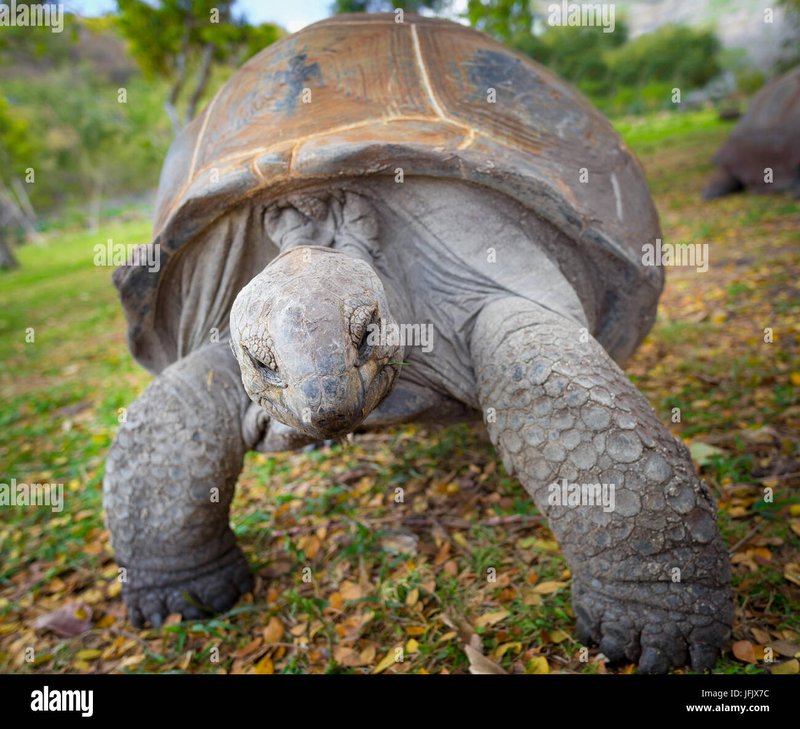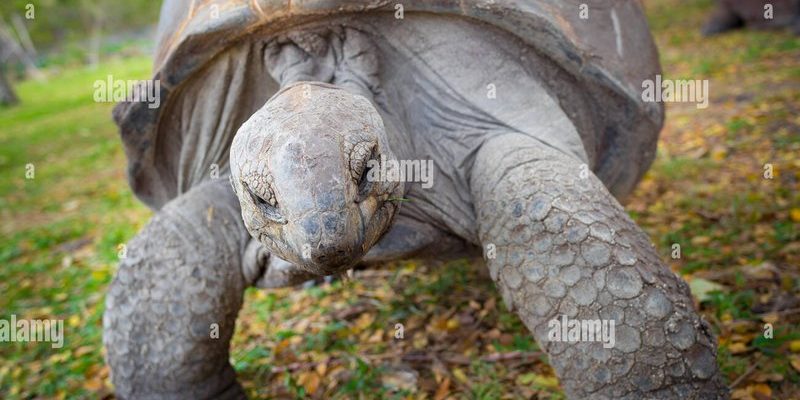
It’s easy to mix up facts with fiction, especially when it comes to such unique animals. You might be wondering what’s true and what’s not about these gentle giants. Just like we sometimes overestimate what we know about a friend’s quirky habits, we can do the same with the Aldabra Giant Tortoise. So let’s dive in and clear the air about some common myths surrounding this incredible species.
Myth 1: Aldabra Giant Tortoises Are Just Like Any Other Tortoise
You might think that all tortoises are more or less the same, but that’s a common misconception. The Aldabra Giant Tortoise is unique in several ways. Its size is perhaps the most obvious difference. While a typical tortoise can be the size of a dinner plate, Aldabras can grow to be the size of a coffee table!
These tortoises have a distinctive dome-shaped shell that can reach up to four feet in length. This shape is not just for show; it helps them survive the harsh environment of Aldabra Atoll. The pandemic of misconceptions doesn’t stop there, though. Many people assume that they share the same diet as smaller tortoises, but Aldabra tortoises have a diet primarily consisting of grasses, leaves, and fruits. Their unique adaptations allow them to thrive where other species might struggle.
Plus, Aldabra tortoises are not social creatures. Unlike some tortoise species that enjoy the company of others, Aldabras tend to be more solitary and prefer their personal space. This important behavioral trait sets them apart from their smaller relatives.
Myth 2: Aldabra Tortoises Are Slow and Lazy
We often associate tortoises with a leisurely pace, and while it’s true that Aldabra tortoises aren’t known for sprinting, they are far from lazy. You might picture them lounging on a sunny rock all day, but here’s the thing: they actually have bursts of energy. These tortoises can move surprisingly fast when they want to, especially when searching for food.
Aldabra tortoises have a natural instinct to roam large distances in their search for nutrients. They can cover over a mile a day! During these walks, they munch on the plants found in their habitat, which helps maintain the delicate ecosystem of the island. It’s not that they’re lazy; they just have a different rhythm to their life.
Another interesting aspect is their role in their ecosystem. Their grazing habits help to keep the vegetation in check, allowing various plant species to thrive. So, instead of being couch potatoes, they’re actually quite active participants in their environment.
Myth 3: Aldabra Tortoises Live Only in the Seychelles
While the Aldabra Atoll is indeed the native home of these tortoises, saying they live only there is a bit misleading. Due to their size and specific habitat needs, they have been relocated to other locations as well. For example, they can be found in certain zoos and wildlife parks around the world.
Additionally, the Aldabra tortoise’s adaptability allows it to thrive in various settings when introduced properly. Even in captivity, their basic needs for a dry environment, ample food, and space to roam largely match their wild habitat. It’s important to know that while their primary home is the Seychelles, their impact is felt worldwide through conservation efforts and ecological studies.
If you ever visit a zoo housing Aldabra tortoises, you’ll see how they can adapt to living in a controlled environment. They are fascinating creatures regardless of their location.
Myth 4: Aldabra Tortoises Are Not Endangered
Some people may think that since these tortoises are so large and resilient, they can handle any situation. Unfortunately, that’s not the case. Aldabra tortoises are classified as vulnerable due to habitat loss, hunting, and climate change. While their population at the Aldabra Atoll is stable, human activities pose a threat to their survival.
Conservation organizations are working tirelessly to protect these majestic creatures. Through efforts to preserve their natural habitat and enforce protection laws, they’re helping ensure that future generations can also enjoy the beauty of the Aldabra tortoise.
It’s truly a collective effort to keep them safe. So, the next time you hear someone say they’re not endangered, you can confidently share the truth about their status and the ongoing conservation efforts.
Myth 5: Aldabra Tortoises Don’t Need Special Care in Captivity
If someone tells you that caring for an Aldabra tortoise is as simple as feeding them and letting them wander, that’s a serious misconception. These tortoises have specific needs that require careful attention.
For instance, they need a balanced diet rich in fiber, including grasses and leafy greens. Not to mention, they require a large habitat that mimics their natural environment as closely as possible. Providing a spacious enclosure with room for digging and grazing is critical for their physical and mental well-being.
Additionally, their diet should be supplemented with minerals and vitamins to ensure they stay healthy. Regular veterinary care is also essential to catch any potential health issues early. So, if you’re considering adopting one, be prepared for a long-term commitment!
Myth 6: Aldabra Tortoises Are Dangerous
Many people are surprised to find out that these gentle giants are not dangerous at all. There’s a widespread belief that large tortoises can be aggressive, but that’s far from the truth. Aldabra tortoises are quite docile.
Their natural instincts drive them to avoid confrontation rather than seek it out. Sure, if they feel threatened, they might retreat into their shells, but that’s simply a protective behavior. In general, these tortoises prefer a peaceful life, munching on plants and soaking up the sun.
If approached correctly, they can display curious and friendly behaviors. Just like many animals, they can sense the energy of people around them. Calm and gentle interactions can lead to fascinating experiences.
Myth 7: Aldabra Tortoises Are Easy Pets
You might think that adopting an Aldabra tortoise would be a fun and easy experience, but it’s essential to understand the commitment involved. They require a lot of space and specific care.
For one, these tortoises can live for over 100 years. Imagine having a pet that could outlive you! That’s a long-term responsibility. Plus, they grow quite large, often needing enclosures that span several hundred square feet. They also need plenty of enrichment and social interaction, just as you’d provide for any pet.
Consider the long-term implications before bringing one into your home. They’re not for everyone, but for those willing to put in the effort, they can be incredible companions.
In summary, the Aldabra Giant Tortoise is a remarkable species that deserves our attention and respect. By breaking down these common myths and misconceptions, we can better appreciate these majestic creatures. Whether you’re learning about them for the first time or you’re a seasoned enthusiast, it’s vital to spread accurate information and advocate for their protection. So, the next time you hear something about Aldabra tortoises that doesn’t sound quite right, you’ll be armed with the facts to set the record straight!

